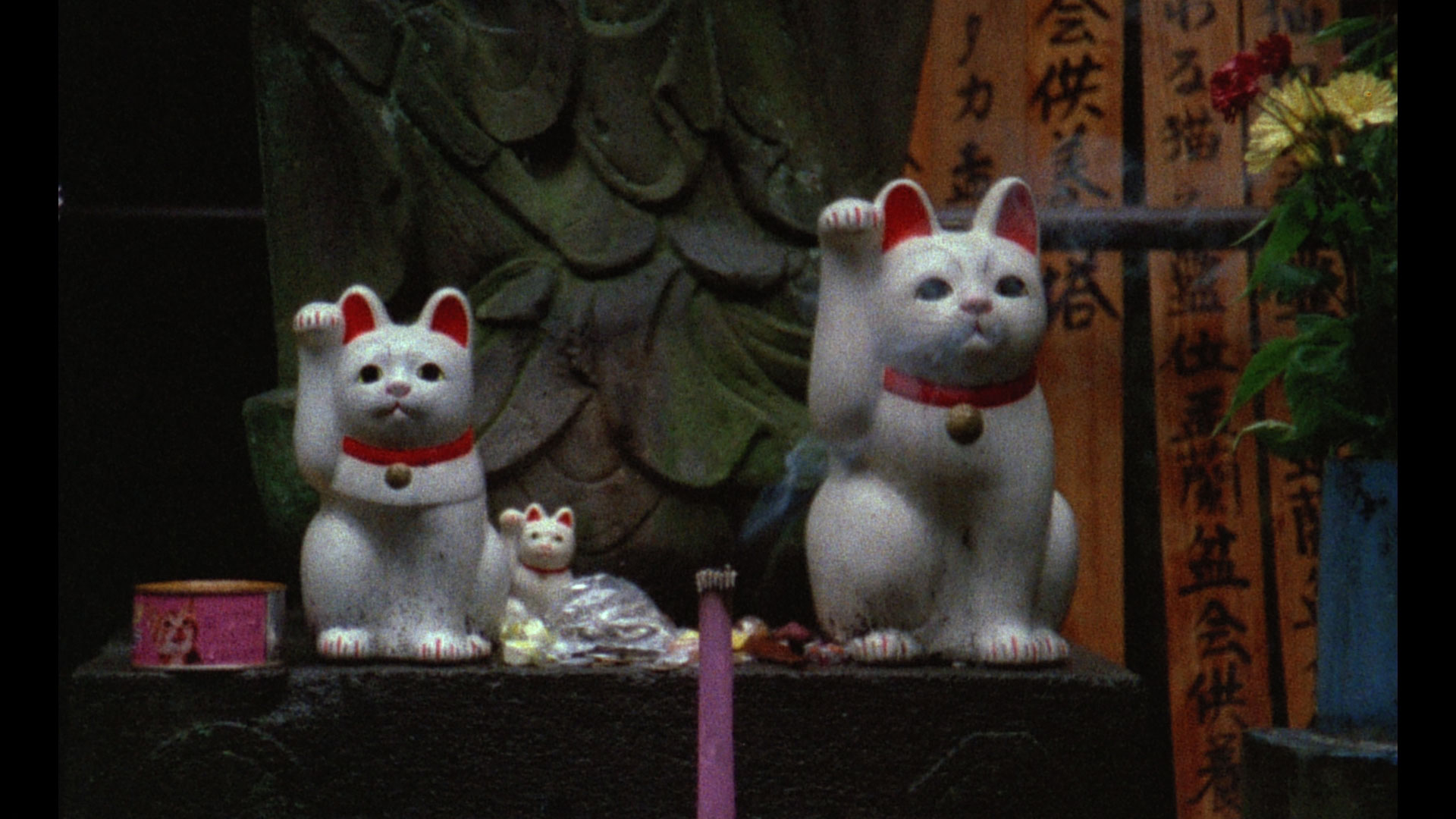The first three times I watched Chris Marker’s experimental documentary Sans Soleil, I couldn’t explain it at all. The next three times, I felt less articulate than ever. But by that point the movie had entered my bloodstream, and there was no fighting it. Let’s explain it this way: Sans Soleil examines the interlocking intricacies of how we see the world and how we remember seeing it. The movie is a sort of travelogue diary stitched together from images captured mostly in Japan and West Africa, though Marker’s camera—and his eye—also roams in Paris, Iceland, and San Francisco. The movie’s ideas unfold through letters one man—a fictional one, with the delightful name Sandor Krasna—has written to the woman who narrates the film. (In the movie’s English version, the voice belongs to Alexandra Stewart.) These letters contain observations that feel like fractured bits of some larger whole: “The Japanese invented CinemaScope 10 centuries before the movies;” “History throws its empty bottles out the window.” The images Marker has assembled, most of them recorded in the 1970s, include smoggy urban sunsets and cars snaking along in traffic, beckoning plaster cats who serve a spiritual purpose, the mystical swirl of Kim Novak’s chignon in Hitchcock’s Vertigo. It’s all as vivid as a dream, and as fleeting as a movie.
- Donald Trump Is TIME's 2024 Person of the Year
- Why We Chose Trump as Person of the Year
- Is Intermittent Fasting Good or Bad for You?
- The 100 Must-Read Books of 2024
- The 20 Best Christmas TV Episodes
- Column: If Optimism Feels Ridiculous Now, Try Hope
- The Future of Climate Action Is Trade Policy
- Merle Bombardieri Is Helping People Make the Baby Decision
